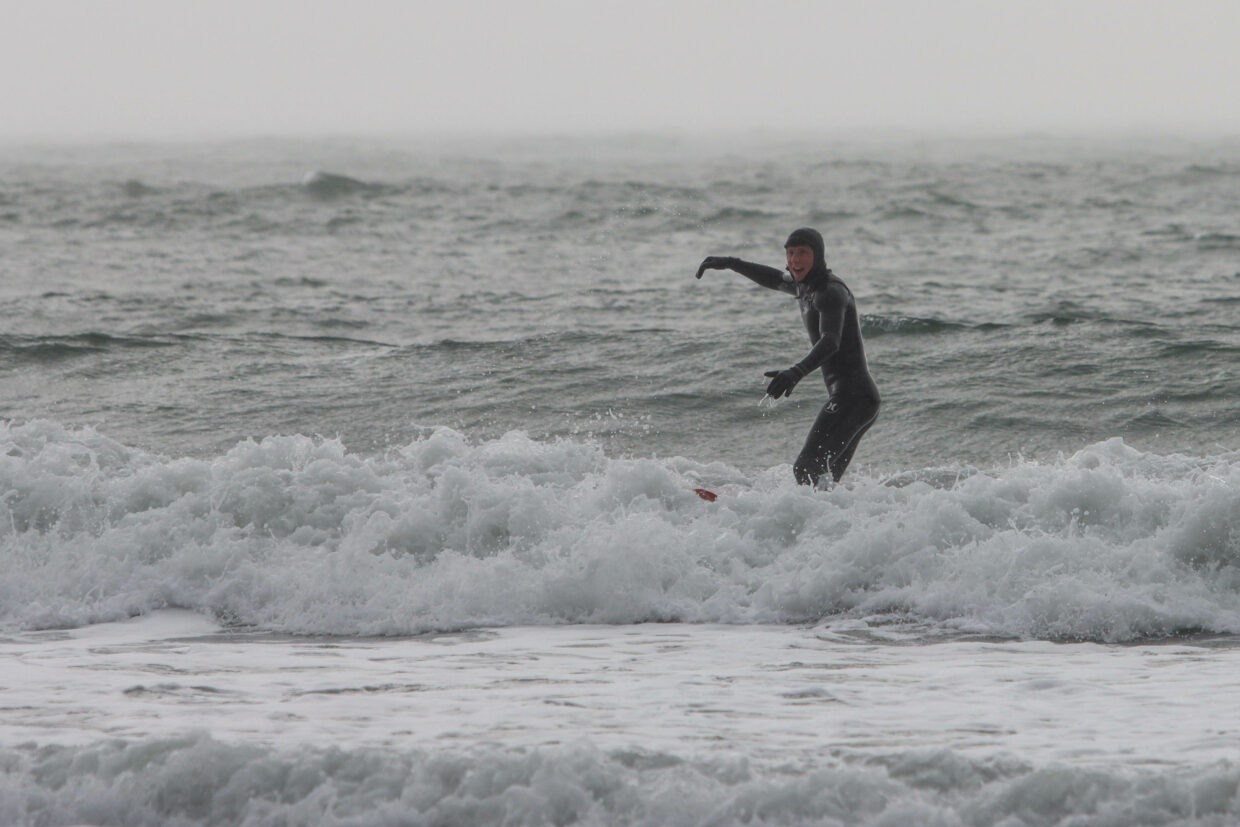When learning how to surf I found some aspects of it very difficult at the beginning, specifically, my paddling, popping up and surfing stance needed some help. These are common mistakes that beginners make and here is how to fix them.
Mistake 1. Inificent paddling: When the surfer uses too much power in their strokes or is paddling way too fast.
How to improve: Arch back and roll shoulders back so that chest is not on the board. Then take long strokes and smooth strokes; however, do not reach too far; keep the chest as centered on the board as possible. Focus on engaging your back muscles on each stroke, specifically your lats. Make sure to keep legs fully on the board not dragging on either side.
Mistake 2. The Romeo pop up: When the surfer pops up onto just one knee like they are proposing. The issue is when popping up your feet are not in the best position and can lead to you being very unbalanced.
How to improve: There is a seemingly simple three step approach to popping up on a board once the surfer has caught the board. First step, chicken wing position: where hands are flat on the surface of the surfboard just beside where your chest would go. Use your hands and push up until elbows are close to straight similar to the yoga pose of upward dog position. Second step, twist shoulder and move back foot: during this step bring back foot forward slightly point it towards the rail of the surfboard and twist shoulders in the same direction. Lastly, bring front foot forward: bring front foot forward and place in the middle of the board in between your hands.
Mistake 3. Surfing stance: When the surfer has an improper foot stance, and when their hips and shoulder are pointing in a different direction.
How to improve: Foot positioning is key. The surfer wants to have his back foot pointed at a 90 degree angle facing the rail of the surfboard. The surfer then wants to have his front foot at a 45 degree angle facing the same way as his back foot. Another key part is having the hips and shoulders facing the same direction rather than having a twist in the hips this leads to better balance.
Mistake 1. Inificent paddling: When the surfer uses too much power in their strokes or is paddling way too fast.
How to improve: Arch back and roll shoulders back so that chest is not on the board. Then take long strokes and smooth strokes; however, do not reach too far; keep the chest as centered on the board as possible. Focus on engaging your back muscles on each stroke, specifically your lats. Make sure to keep legs fully on the board not dragging on either side.
Mistake 2. The Romeo pop up: When the surfer pops up onto just one knee like they are proposing. The issue is when popping up your feet are not in the best position and can lead to you being very unbalanced.
How to improve: There is a seemingly simple three step approach to popping up on a board once the surfer has caught the board. First step, chicken wing position: where hands are flat on the surface of the surfboard just beside where your chest would go. Use your hands and push up until elbows are close to straight similar to the yoga pose of upward dog position. Second step, twist shoulder and move back foot: during this step bring back foot forward slightly point it towards the rail of the surfboard and twist shoulders in the same direction. Lastly, bring front foot forward: bring front foot forward and place in the middle of the board in between your hands.
Mistake 3. Surfing stance: When the surfer has an improper foot stance, and when their hips and shoulder are pointing in a different direction.
How to improve: Foot positioning is key. The surfer wants to have his back foot pointed at a 90 degree angle facing the rail of the surfboard. The surfer then wants to have his front foot at a 45 degree angle facing the same way as his back foot. Another key part is having the hips and shoulders facing the same direction rather than having a twist in the hips this leads to better balance.
I’ve attached this video that I found super helpful that explains some of the mistakes I was facing and how to correct them.
